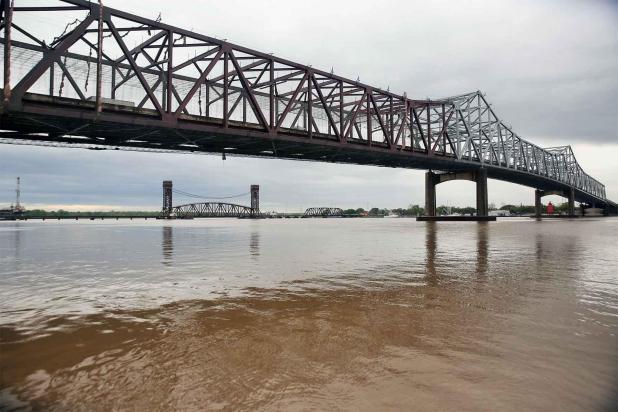
Officials hope Atchafalaya stays low in spring 2022
Sometime Wednesday afternoon, the Atchafalaya River at the Morgan City gauge slipped below 5.0, more than a foot below flood stage. It was still a foot above what the National Weather Service calls the “action” level.
But that’s all right with professional river-watchers. They’ve seen too much real action over the last six years.
The break has provided time to overcome the damage inflicted by a series of high-water events since 2016.
The flooding has resulted in property damage and millions in spending on mitigation efforts, and caused shoaling in waterways important to the local economy.
Raymond “Mac” Wade, executive director of the Port of Morgan City, recently participated in a multiagency high-water forecast meeting. For now, the prediction is positive.
The Ohio River Valley is “where our Achilles heel is at,” Wade said. Barring heavy rain there, 2022 appears about to become a second consecutive spring without a major flood.
“Right now, we’re slowly dipping down to 4 feet within six to 10 days,” Wade said Wednesday.
The National Weather Service’s online gauge for the Atchafalaya at Morgan City is slightly less optimistic. It has the river falling gradually to 4 feet April 19.
The port’s channel is open again, close to its authorized depth of 20 feet and width of 400 feet from Morgan City past Crewboat Cut and Eugene Island all the way to the sea buoy. That’s after a historic level of dredging, especially since Hurricane Ida.
Individual dredging projects, funded through the U.S. Army Corps of Engineers, can easily run $10 million or more. For a short time late last years, four dredges worked in local waterways at the same time, a first.
Berwick Bay still contains sandbars, but the fuel docks and Conrad Shipyard can do business along the river’s eastern bank north of the Morgan City wharf, Wade said.
Dredging has included isolated spots, like the troublesome Stout’s Pass north of Berwick, as well as the years-long experiment pitting Brice Civil Constructors’ Arulak dredge against sticky “fluff” mud close to the Gulf.
The goal is to attract the import-export shipping traffic that used the Port of Morgan City for transshipment until the flooding and shoaling began in 2016.
“We’re working on that,” Wade said. “We’re letting them know we’re open.”
The next major dredging project will be on Bayou Chene, which hasn’t been cleared since 2009. Wade hopes the work there could be under contract in June and underway within two months after that.
Like the Atchafalaya, Bayou Chene is a federal waterway with authorized dimensions of 20 feet deep and 400 feet wide.
Funding has been secured for the dredging, Wade said, but dredging the bayou to its authorized dimensions would be a $30 million project. The port will be looking for more money in the next round of congressional “work plan” funding for the Corps.
If the full $30 million can’t be secured, Wade said, savings might be achieved by widening the channel to something less than 400 feet. But he said he’ll insist on the 20-foot depth.
